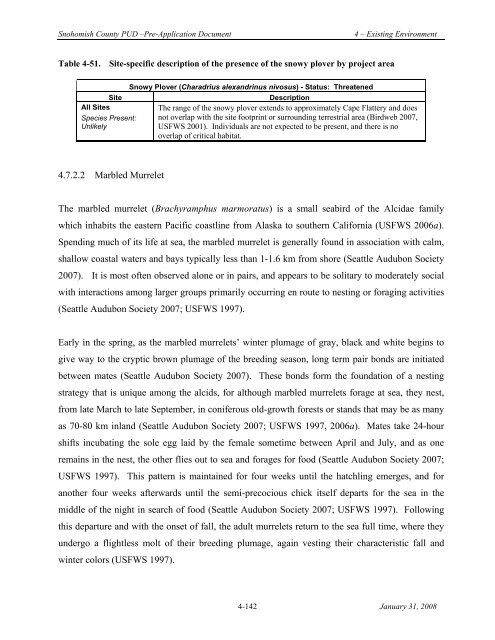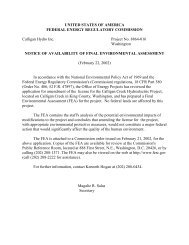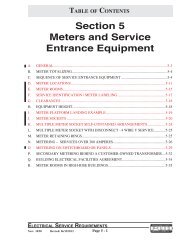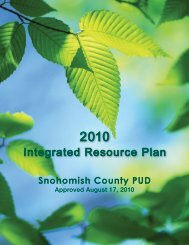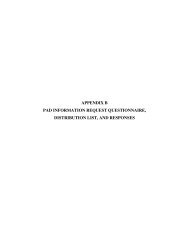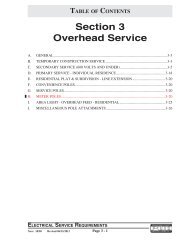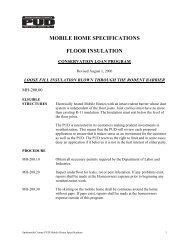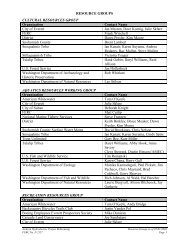Tidal_PAD_V1_Sec4.pdf - Snohomish County PUD
Tidal_PAD_V1_Sec4.pdf - Snohomish County PUD
Tidal_PAD_V1_Sec4.pdf - Snohomish County PUD
Create successful ePaper yourself
Turn your PDF publications into a flip-book with our unique Google optimized e-Paper software.
<strong>Snohomish</strong> <strong>County</strong> <strong>PUD</strong> –Pre-Application Document<br />
4 – Existing Environment<br />
Table 4-51. Site-specific description of the presence of the snowy plover by project area<br />
Site<br />
All Sites<br />
Species Present:<br />
Unlikely<br />
Snowy Plover (Charadrius alexandrinus nivosus) - Status: Threatened<br />
Description<br />
The range of the snowy plover extends to approximately Cape Flattery and does<br />
not overlap with the site footprint or surrounding terrestrial area (Birdweb 2007,<br />
USFWS 2001). Individuals are not expected to be present, and there is no<br />
overlap of critical habitat.<br />
4.7.2.2 Marbled Murrelet<br />
The marbled murrelet (Brachyramphus marmoratus) is a small seabird of the Alcidae family<br />
which inhabits the eastern Pacific coastline from Alaska to southern California (USFWS 2006a).<br />
Spending much of its life at sea, the marbled murrelet is generally found in association with calm,<br />
shallow coastal waters and bays typically less than 1-1.6 km from shore (Seattle Audubon Society<br />
2007). It is most often observed alone or in pairs, and appears to be solitary to moderately social<br />
with interactions among larger groups primarily occurring en route to nesting or foraging activities<br />
(Seattle Audubon Society 2007; USFWS 1997).<br />
Early in the spring, as the marbled murrelets’ winter plumage of gray, black and white begins to<br />
give way to the cryptic brown plumage of the breeding season, long term pair bonds are initiated<br />
between mates (Seattle Audubon Society 2007). These bonds form the foundation of a nesting<br />
strategy that is unique among the alcids, for although marbled murrelets forage at sea, they nest,<br />
from late March to late September, in coniferous old-growth forests or stands that may be as many<br />
as 70-80 km inland (Seattle Audubon Society 2007; USFWS 1997, 2006a). Mates take 24-hour<br />
shifts incubating the sole egg laid by the female sometime between April and July, and as one<br />
remains in the nest, the other flies out to sea and forages for food (Seattle Audubon Society 2007;<br />
USFWS 1997). This pattern is maintained for four weeks until the hatchling emerges, and for<br />
another four weeks afterwards until the semi-precocious chick itself departs for the sea in the<br />
middle of the night in search of food (Seattle Audubon Society 2007; USFWS 1997). Following<br />
this departure and with the onset of fall, the adult murrelets return to the sea full time, where they<br />
undergo a flightless molt of their breeding plumage, again vesting their characteristic fall and<br />
winter colors (USFWS 1997).<br />
4-142 January 31, 2008


